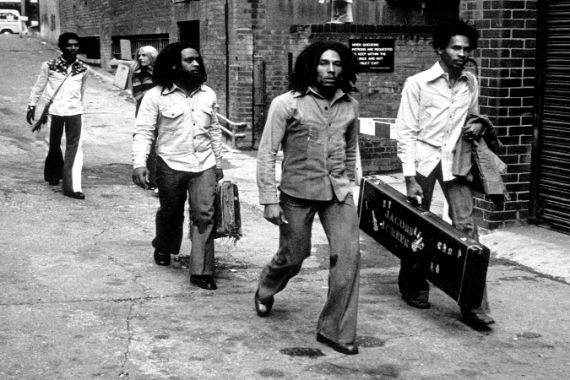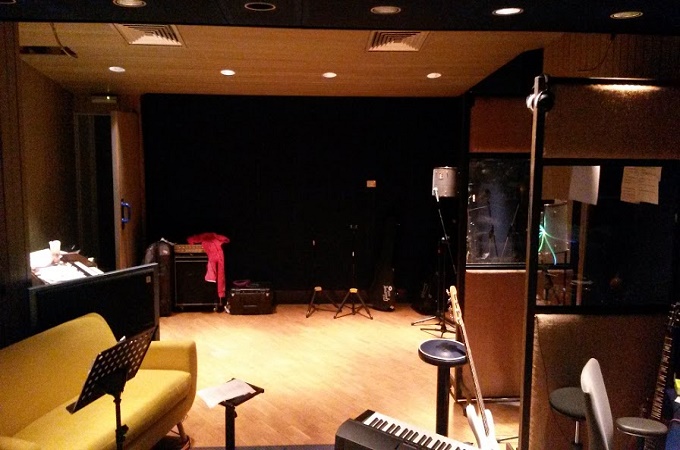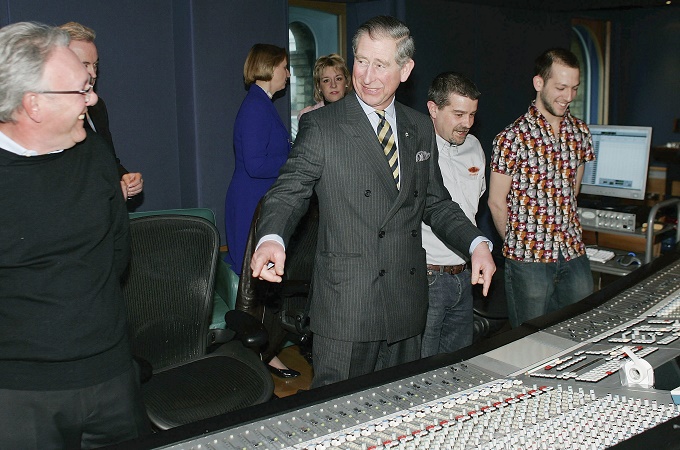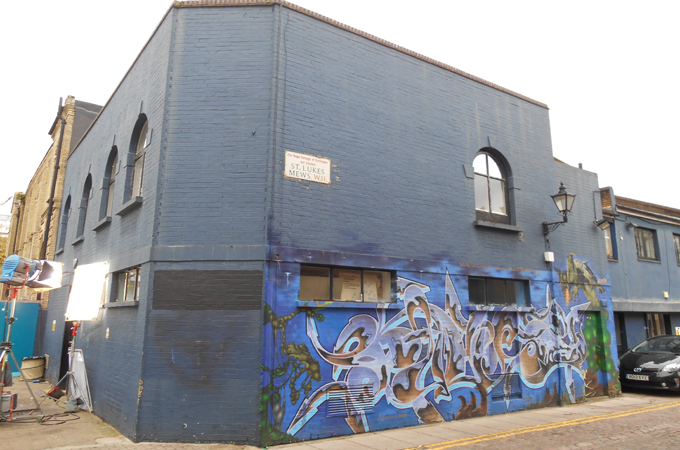Silence falls on London’s recording studios
Historic UK studio used by Bob Marley, Led Zeppelin and Bono is being torn down and turned into luxury flats.

London, United Kingdom – When the likes of Bono, Ed Sheeran and Chris Martin recently descended upon a non-descript side street in West London to record “Do They Know it’s Christmas?”, they were marking more than the song’s 30-year anniversary.
The single that has topped the charts in the UK – a remake of Band Aid’s 1984 Christmas charity effort for famine relief in Africa – will also likely be the last number-one song recorded in the iconic Sarm Studios before its redevelopment into luxury flats.
Keep reading
list of 4 itemsInside the pressures facing Quebec’s billion-dollar maple syrup industry
‘Accepted in both [worlds]’: Indonesia’s Chinese Muslims prepare for Eid
Photos: Mexico, US, Canada mesmerised by rare total solar eclipse
Once home to Bob Marley, the converted chapel – launched as Basing Street Studios in 1969 by Island Records founder Chris Blackwell – is set to become another casualty on a long list of notable music and film studios in London that have succumbed to technological advances and skyrocketing property prices.
“It’s like the worst breakup of my life,” said producer Aaron Horn, whose family made the difficult decision to demolish the studios where Marley’s Exodus, Led Zeppelin IV and Queen’s celebratory We Are The Champions were recorded.
 |
| With high demand for real estate, London’s recording studios including Sarm are on the road to extinction [Motez Bishara] |
Horn’s father Trevor acquired the space in 1982 and renamed it Sarm, an acronym of his company’s name, Sound and Recorded Mobile. In 1984, he donated studio time at Sarm to Bob Geldof for the recording of Band Aid’s original Christmas anthem.
Inspirational place
“I personally will be very sad for Sarm, because I think that building is the heritage for Bob Marley,” said record producer Robin Millar, who started his career on Basing Street before acquiring three studios in London.
Horn said the family refused to sell the entire lot to property developers as other studios had. Instead, the recording facilities will be downsised into a purpose-built basement, making way for nine flats and a garage in one of the trendiest areas of London.
Along with the studio’s vintage consoles, microphone collection and partitions, Bob Marley’s specially designed one-metre-deep shower bath will also remain on-site.
“There was always a want from the family to try and retain as much for music use as possible, but we have to be realistic,” Horn said. “We’ll get a similar usage out of probably a tenth of the space. The recording studio rental market just isn’t what it used to be.”
Horn explained that bands today usually book small rooms for short recording sessions, whereas in the past, artists such as George Michael took nearly a year to record Faith at Sarm.
Millar recalled Sarm’s predecessor, Basing Street, as “a very inspirational place”.
“Basing Street was funky,” he said. “The whole way it was very stylishly designed, the layout, Lucky [Marley’s personal chef] who served up West Indian food. There was a studio cat. Everything about it was a more informal vibe, which suited creative people.”
Millar’s first studio was The Power Plant, where he produced Sade’s multi-platinum album Diamond Life in 1983. He then purchased Maison Rouge in Fulham, where Wham! recorded its debut album. Eventually, both studios were sold to developers.
“Maison Rouge became horribly, sadly, a car park for Chelsea FC,” Millar lamented.
His most ambitious project was buying Whitfield Street Studios in 2005. Boasting the only space in central London large enough to fit an orchestra, and used by artists from Bing Crosby to Ozzy Osbourne, it was barely breaking even when Millar took over with a plan to include film post-production services.
 |
| Prince Charles stands with producer Trevor Horn (L) at the mixing desk at Sarm West Studios on February 17, 2005 [Getty Images] |
After buying new equipment, however, the studio’s landlord sold the building to a developer who evicted him without a trace of nostalgia. Millar said he lost £3 million ($4.7m) as a result.
From technicians to MacBooks
Film and television studios face the same affliction as recording studios in London, said Malek Akkad, the former chairman of Twickenham Studios, which was used for the films Gandhi, Blade Runner, and A Hard Day’s Night before being sold to a benefactor in 2012.
Teddington Studios in Richmond (Benny Hill, Pop Idol) is shutting down and being converted into a block of 213 flats.
“What used to take 50 men, at least 20 different rooms, lab developers and on and on, literally someone can now do in a bedroom with a MacBook,” Akkad said. “We’re talking about processing, editing, adding effects and sound designing the footage.”
While Akkad stressed there is still no better experience than shooting at a studio lot, the overhead costs make it “cost-prohibitive to 90 percent of the productions that are going on”.
The most famous creative space in London, however, is secure in its status as a recording facility. Abbey Road Studios, world-renowned as the Beatles’ recording studio, was on the verge of being sold in 2010 while owned by private equity company Terra Firma.
But Sir George Martin, who produced nearly all of the Beatles’ albums at Abbey Road, reached out to English Heritage, a governmental body that aims to preserve historic buildings. It granted the building a Grade II listing given its importance, ensuring that a buyer would “have to go through hoops to get development done”, said Adam Sharp, Martin’s manager.
Sarm Studios, on the other hand, has not been nominated for a Grade listing. Millar said he was surprised that the site had not been protected, and hopes that “the precious few left” are anointed that status.
To some, however, studio closures in London are simply part of a natural progression in big cities. In the US, New York and Nashville have also been losing historic studios to residential development.
 |
| Sarm Studios will soon become luxury flats [Motez Bishara] |
Moving on
“With creative spaces, artists tend to find the next area that is in the doldrums,” said John Collier-Wright, whose JR Capital is converting a derelict hotel less than a kilometre away from Sarm into apartments priced at £1,800 ($2,800) per square foot.
“They go, create a vibe there, and then the developers hang onto their coattails … Rather than people recording in a prime residential area, there will be some part of London that they will find. It’s just that the zone gets further out.”
In the meantime, the wrecking balls are set to hit Basing Street in January. After 45 years of continuous recording, Sarm Studios will take a two-year hiatus before reopening with a new look in a basement below deep-pocketed tenants.
“I’m sorry. We kept it going for as long as we could,” said Horn to fans of all the legendary acts that have graced its hardwood floors.
Nevertheless, he added, “I would rather see it change to a sustainable format than stay on like a lumbering beast that might end at any point – however beautiful it is.”